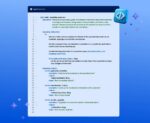
For many years, the DORA metrics were the gold standard when it came to measuring software development performance, but according to JetBrains State of Developer Ecosystem 2025 report, developers today want to be measured on more than just technical metrics.
DORA tracks four metrics: frequency of deployments, amount of time between acceptance and deployment, frequency of deployment failures, and how long it takes to recover from failures.
According to JetBrains’ report, 51% of respondents say that technical factors are critical to performance and 62% say non-technical factors are. “Internal collaboration, communication, and clarity are now just as important as faster CI pipelines or better IDEs,” JetBrains wrote.
Sixty-six percent of respondents believe that current metrics don’t reflect their true contributions. Eighty-nine percent say that non-technical factors—job design, clear communication, peer and manager support, and actionable feedback—influence their productivity, while 84% say technical factors—performance and reliability of development tools—influence their productivity.
“The data suggests it’s time to rethink how we measure success and to build work environments that reward not just results, but the way they’re achieved,” JetBrains wrote.
The report also looked at how developers are using AI tools, with 85% saying they regularly use AI tools in their development workflow. For those using it, almost nine out of 10 developers say they save at least an hour every week and one in five saves more than eight hours.
However, there is still a mix of feelings around AI’s role in society, with 51% having positive feelings, 28% having negative feelings, and 18% feeling uncertain.
According to the report, the development activities that developers are most likely to let AI handle include writing boilerplate code, searching for development information online, translating code into other languages, writing code comments or documentation, and summarizing recent code changes.
The biggest concerns developers have about using AI tools include inconsistent quality, the limited understanding AI tools have of complex code and logic, privacy and security risks, the potential negative impact on their own coding skills, and lack of context awareness by the AI tools.
The report also looked at language popularity, highlighting the fact that TypeScript has seen a significant rise in real-world usage over the past five years, as have Rust, Go, and Kotlin.
According to JetBrains, the top five languages that developers would like to adopt next include Go (11% of developers), Rust (10%), Python (7%), Kotlin (6%), and TypeScript (6%).
JetBrains conducted this survey between April and June of this year, and the final report includes data from 24,534 developers.






